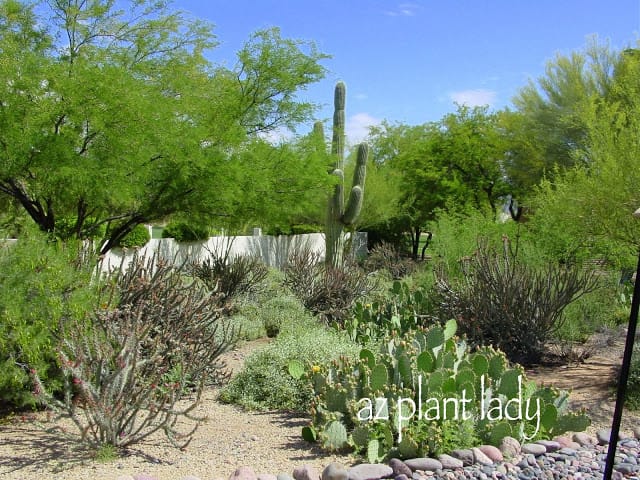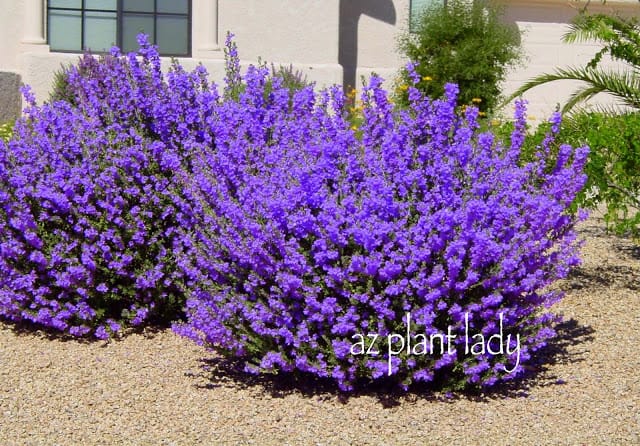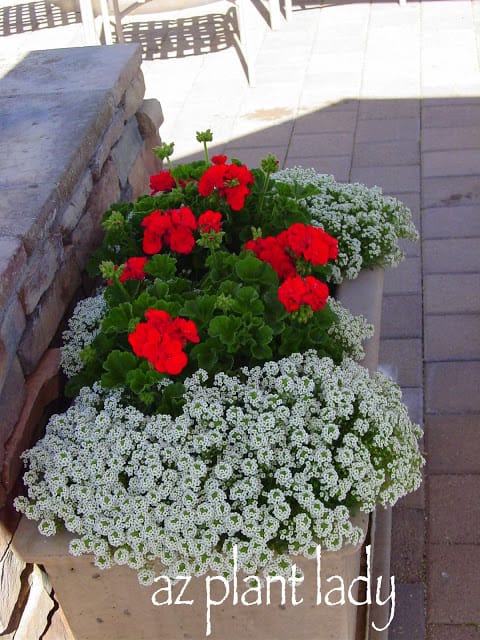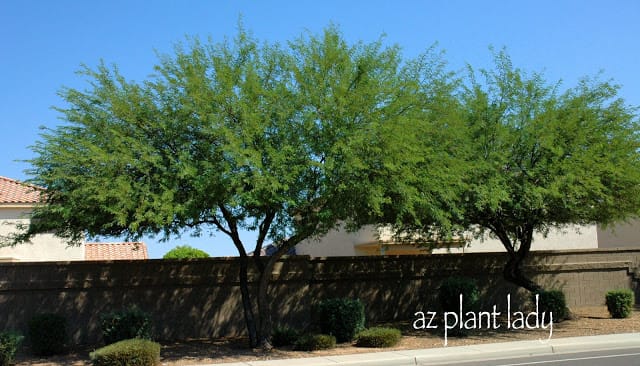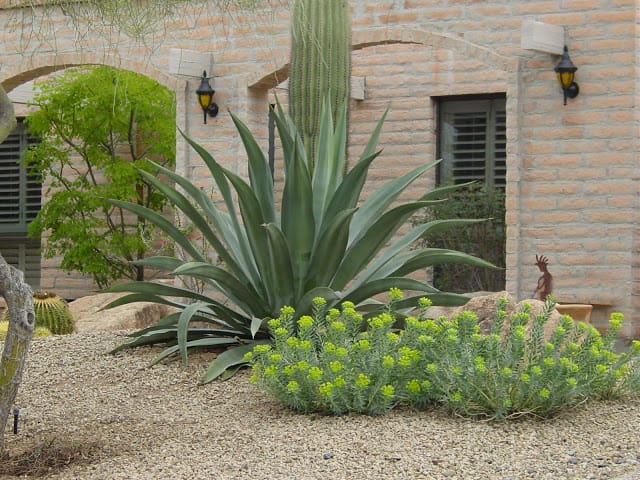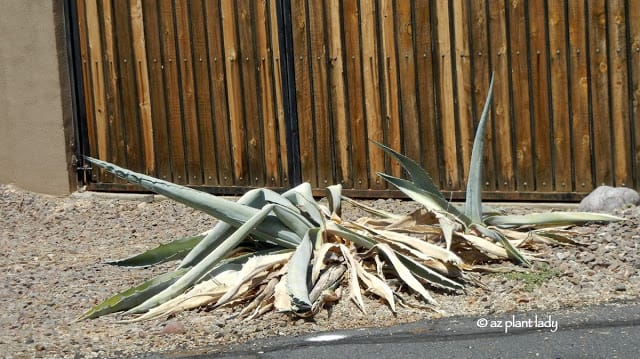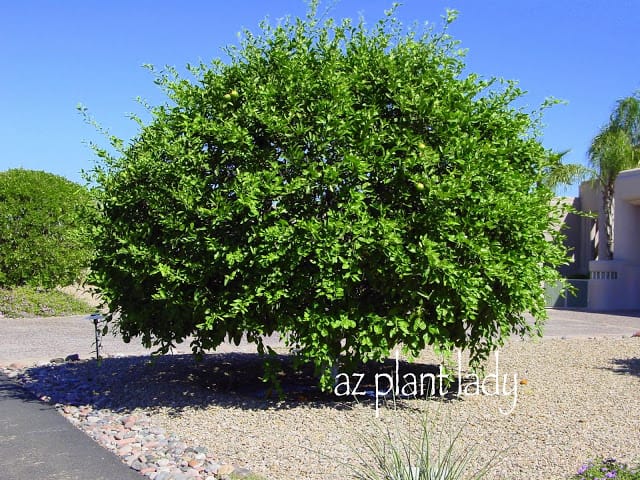I thought that I would share with you my observations on various landscape practices that I viewed over a one week period last month.
As a horticulturist (or a plant lady as my kids call me), I have a hard time “turning off” and not looking at landscapes as I go by. I am always looking for a beautiful garden 🙂
So here are my observations, in no particular order.

Got floppy agave?
This is the time of year where you will see agave that seem to have suddenly flopped over.

I saw both of these agave on my way home from my mother-in-law’s house.
There was one year when I was working as a horticulturist for golf courses and we had quite a few of our agave flop over. Now, I had a fairly good idea what had happened to them, but to confirm my diagnosis, we had to dig them up.
Once we did, we were hit with a truly horrible odor, which confirmed that we were dealing with agave snout weevils.
You can read more about agave snout weevil and how to recognize an infestation and how to prevent them here.
Okay, my second observation came courtesy of a facebook follower who asked me if gray Palo Verde trunks were normal.
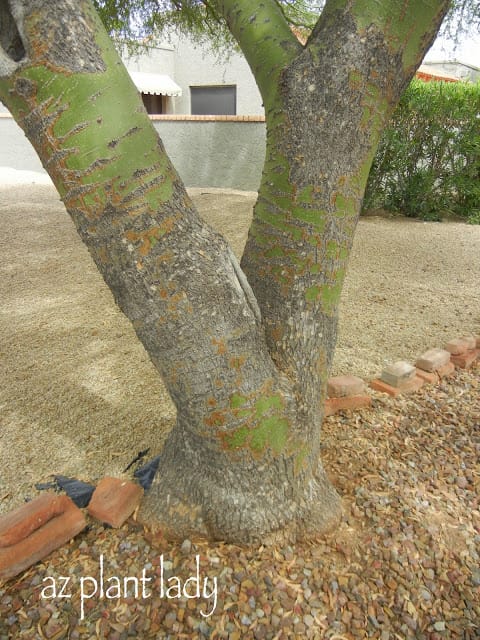
I explained to her that as Palo Verde trees age, it is common for their trunk to turn gray.
Her question reminded me again of how much I didn’t know when I started on horticulture course work and all the questions that I had. There are way to many things like this that I overlook and need to remember so that I can assist new desert gardeners.
Speaking of Palo Verdes, I saw this beautiful ‘Desert Museum’ Palo Verde tree in front of the hospice facility where my father-in-law was.
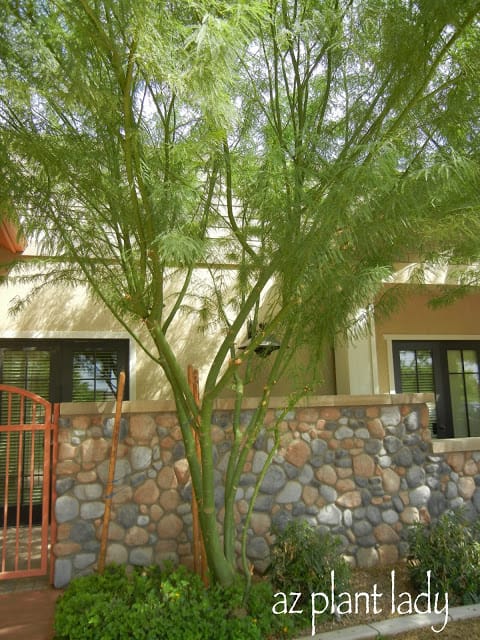
You may be surprised to find that there is a serious problem with this tree.
Can you see what it is?
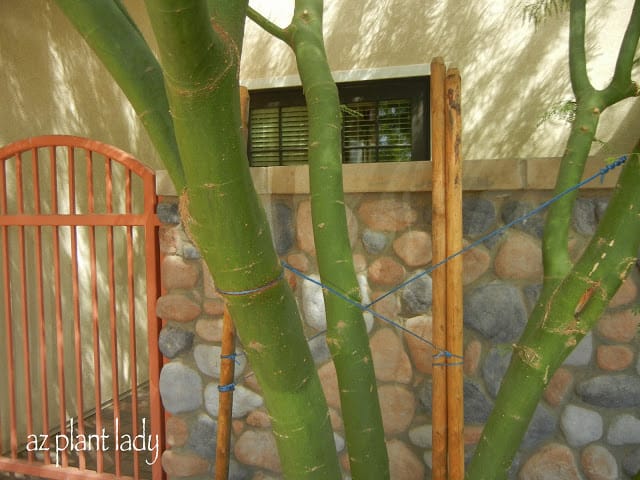
Here it is a bit closer.
The tree has been staked, but the cable wire used was not covered where it comes in contact with the tree trunk.
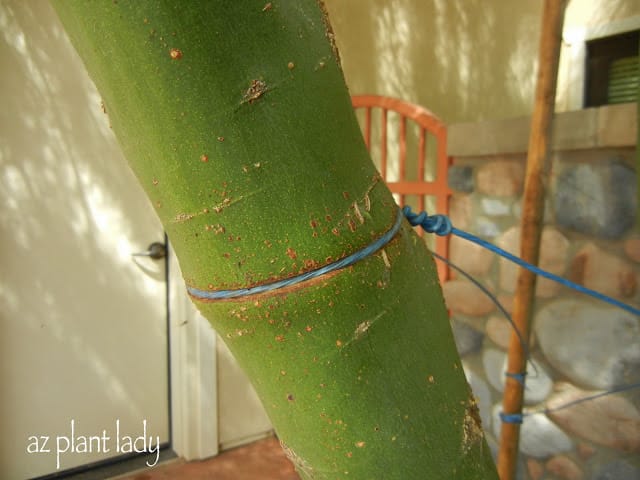
As you can see, the cable wire is digging into the trunk and starting to cut off the vascular system of the tree, which is located around the outer portion of the trunk.
Unfortunately, I see this quite often. Usually in parking lot trees. There is still time to remove the wire in this case.
When staking a tree, always cover the portion of the cable wire that touches the tree with a piece of drip hose or a regular hose and make sure that you can adjust it as the trunk grows larger.
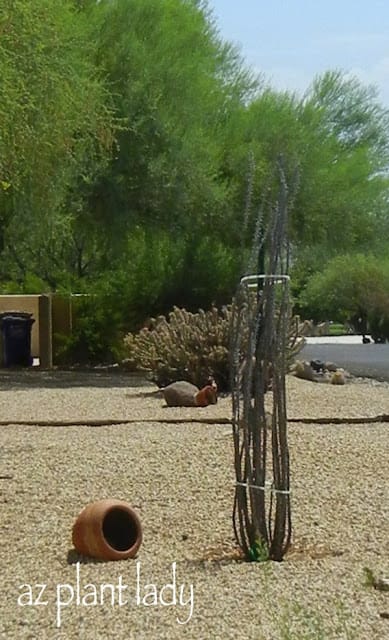
When Ocotillo are sold and transported, their canes are often tied up for safety for both the handler and the ocotillo itself.
However once planted, you do not need to keep it tied up. Remove the ties and soon you will be enjoying the beauty of your Ocotillo as it grows and spreads out its beautiful canes.

Aren’t they so beautiful?
My last observation occurred as I traveled to the outskirts of the Phoenix metro area where I was to meet with an organization regarding a landscape service project.
As I drove, the suburbs began to melt away and I was surrounded by farmland. As I turned down the street where my meeting was located, I saw that it was lined with mature pecan trees and large farmhouses sitting a few acres each.
It was just so beautiful…

I bet you didn’t think that places like this existed in the desert, did you?
Well, there are actually many areas like this. As I left, I could just picture myself living in a large farmhouse with acres of land to garden in. But then I reminded myself that I have a hard enough time keeping up with my 1/3 of an acre 😉
******************
I hope your week is going well.
My younger sister (not my youngest sister, Chicken Farmer), and her family are coming out for a visit tomorrow. Her husband is interviewing for a job out here and I am very hopeful that they will be moving out here shortly.
Believe it or not, I was the first of my family to move out to Arizona from Southern California 25 years ago after I married my husband. Then 5 years ago, my youngest sister and my brother and their families moved out here. My parents followed a year later and now perhaps my other sister will soon move here.
I hope it all works out.
Oh by the way…..11 days until my daughter’s due date.
I am beginning to get just slightly excited!


